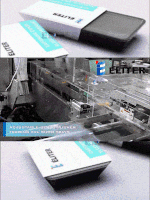What are Carton Folding Machines?
2024-05-30
Carton folding machines are an essential part of modern packaging processes, particularly in industries such as food and beverage, pharmaceuticals, cosmetics, and consumer goods. These machines automate the folding and gluing of carton blanks into finished boxes, enhancing production efficiency, consistency, and quality. In this comprehensive guide, we will delve into the various aspects of carton folding machines, including their types, components, working principles, benefits, and applications.
BOBST FOLDER GLUER
Definition of Carton Folding Machines
Carton folding machines are specialized equipment designed to fold, glue, and form flat carton blanks into finished cartons or boxes. These machines handle various carton designs and sizes, making them versatile for different packaging needs.
Components of Carton Folding Machines
- Feeder: The feeder section is responsible for loading flat carton blanks into the machine. It can be manual or automated, depending on the machine’s sophistication.
- Folding Section: This section folds the carton blanks along predefined creases to form the basic shape of the carton.
- Gluing Section: In this section, adhesive is applied to specific areas of the carton to secure the folds and ensure the carton holds its shape.
- Delivery Section: The finished cartons are collected and stacked for easy removal and subsequent packaging processes.
Types of Carton Folding Machines
Manual Carton Folding Machines
These machines require significant human intervention and are typically used in small-scale operations. They are more affordable but less efficient than automated systems.
Semi-Automatic Carton Folding Machines
Semi-automatic machines offer a balance between manual labor and automation. They still require some human involvement but can handle higher production volumes and offer better consistency than manual machines.
Fully Automatic Carton Folding Machines
Fully automatic machines are designed for high-speed, high-volume production lines. They require minimal human intervention, offering the highest efficiency, consistency, and productivity.
Working Principles of Carton Folding Machines
Feeding
The process begins with the feeding of flat carton blanks into the machine. In automated systems, a hopper or conveyor feeds the blanks continuously.
Folding
As the carton blanks move through the machine, they are folded along pre-scored lines. Various mechanisms, such as folding plates, belts, and rollers, are used to achieve precise folds.
Gluing
Adhesive is applied to specific areas of the folded carton using gluing nozzles or rollers. The type of adhesive and application method depends on the material and design of the carton.
Forming and Sealing
After gluing, the cartons are pressed to ensure secure adhesion and proper shaping. The formed cartons are then conveyed to the delivery section for collection.
Choosing the Right Carton Folding Machine
Production Volume
Consider the production volume when choosing a carton folding machine. High-speed, fully automatic machines are ideal for large-scale operations, while semi-automatic or manual machines may suffice for smaller production needs.
Carton Design and Size
Ensure the machine can accommodate the specific designs and sizes of cartons used in your packaging process. Versatility in handling different carton types is an essential factor.
Budget
Evaluate your budget constraints and balance the initial investment with long-term benefits such as efficiency, cost savings, and potential for increased production capacity.
Manufacturer Support
Choose a reputable manufacturer that offers reliable customer support, maintenance services, and readily available spare parts to ensure smooth and continuous operation.




